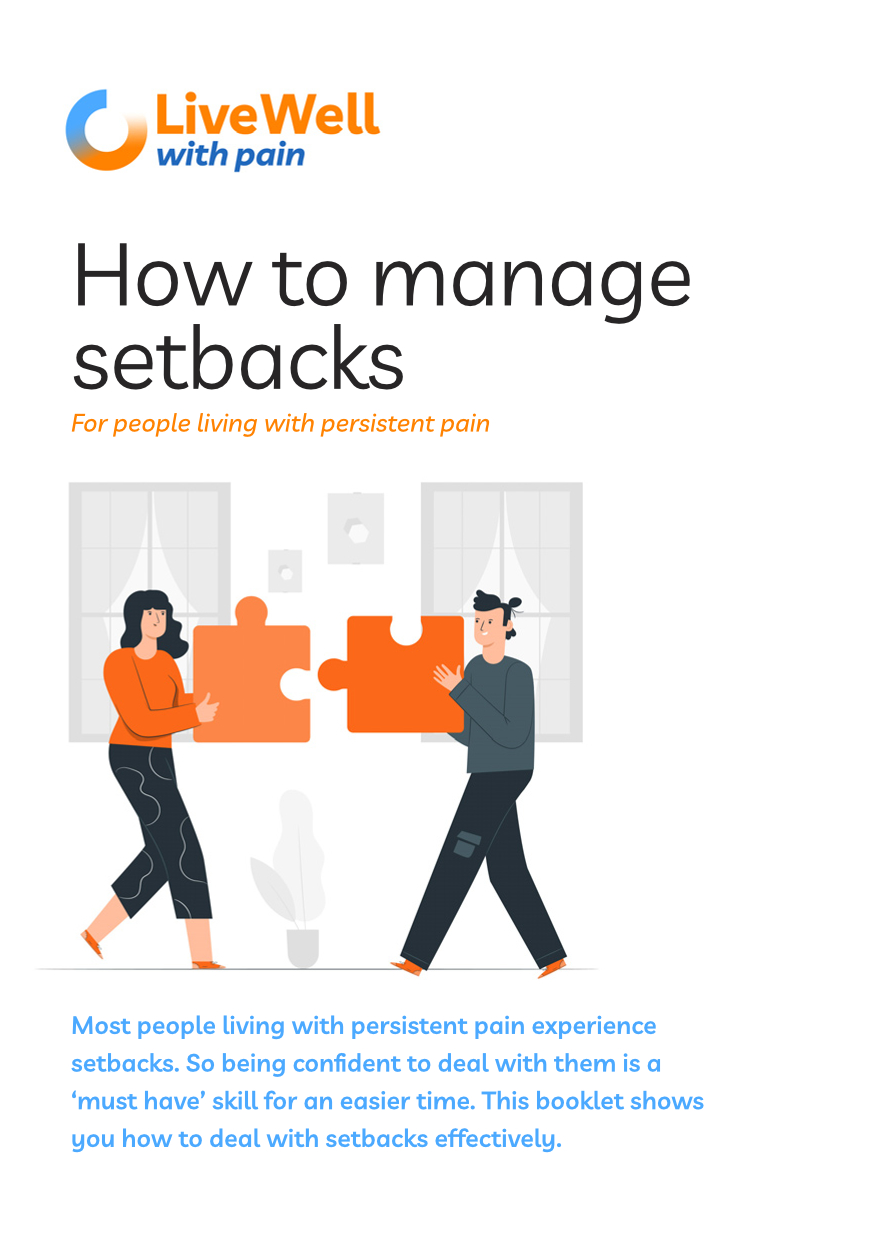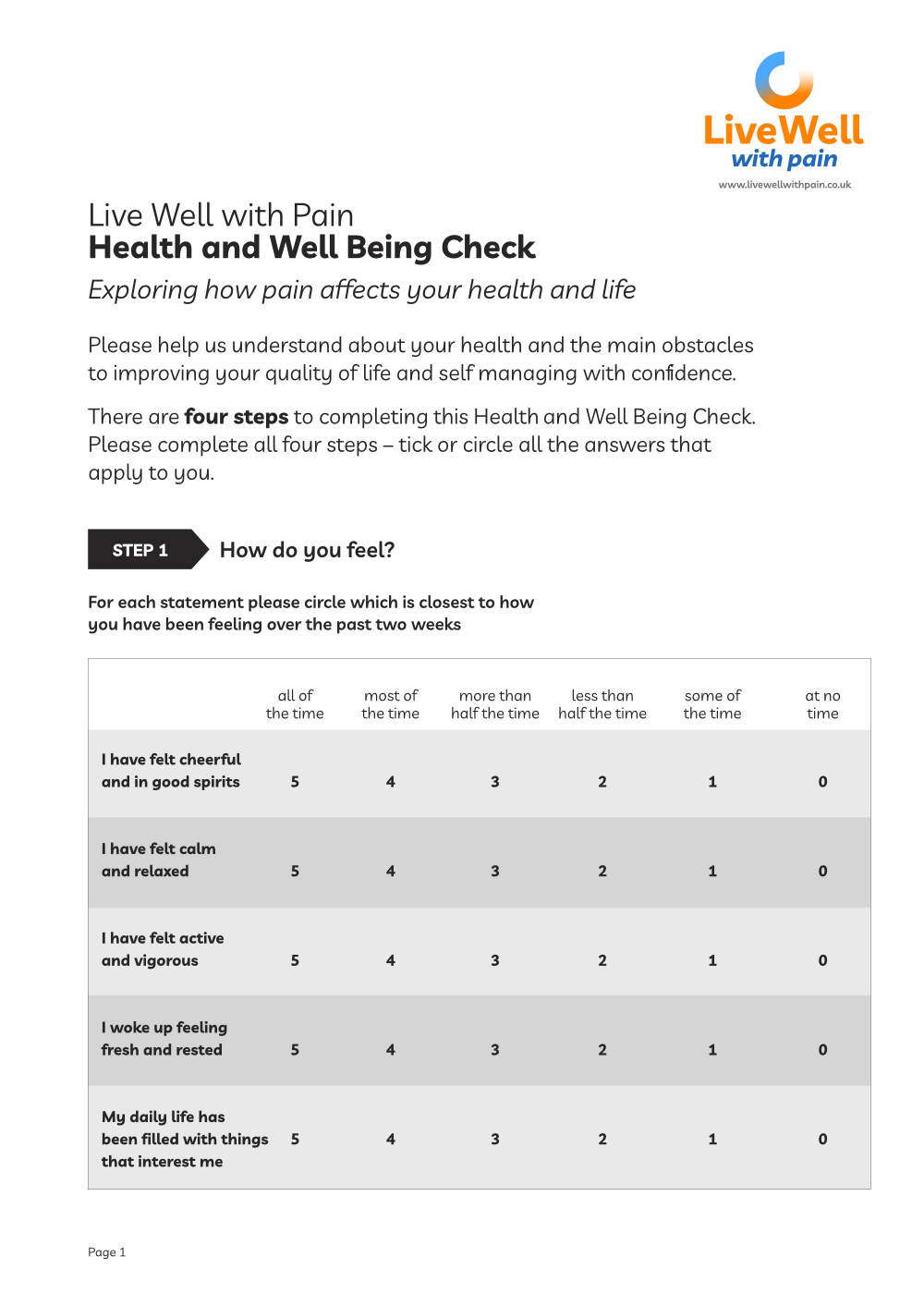Managing setbacks
Setbacks are common in managing pain. So it’s important to prepare people with pain for setbacks, manage their expectations and discourage ‘all-or-nothing’ thinking. Having a setback plan in place to manage them is the key.
Setbacks can arise for no obvious reason, or they may be related to tiredness, pacing problems, a change in mood or a change in medication.
Using the Ten Footsteps may reduce the chance and frequency of setbacks that the person experiences.
However setbacks still happen. So encourage the person you are supporting to make a setback plan.
Remember, this is best done at a time when things are going well, though working with someone on their plan when a setback is happening is also possible.

Actions you can take
Help the person you’re supporting to develop a setback plan
Share the Managing setbacks booklet with the person you’re supporting so they can explore the concepts for themselves.
- Explore recent setbacks and identify common triggers like poor sleep over previous few days, tiredness, trying to fit in too many things into the day, viral infection or social issues.
- Help the person create their own plan themselves to use in their next few weeks.
- Encourage them to write their plan including four things they will do in the next setback (TIP: People often use their mobile phone notes or a card pinned to a board, so their plan is always to hand).
- Use some of their ideas that were useful with last setbacks. Maybe offer ideas from the list below.
- Increase relaxation or similar skills, plan in more enjoyable activities etc.
REMEMBER: It is important they do not stop all activity, as this will make it harder to recover from their setback.
Here are some examples of things that the person could include in their plan:
- Reducing activity levels (though not stopping) and introducing more regular small breaks
- Avoid complete rest – this results in about 1% loss of muscle strength each day! So, doing something is still better than nothing
- Pace more but keep active
- Practice relaxation techniques
- Ask for help from others
- Challenge negative thoughts
- Plan more small treats and a reward when the setback is over
Resources to use with the person you are supporting
Managing setbacks
Practical advice and tips for people with persistent pain to help them build a setback plan. Can be used during a setback or, even better, during better times so the person is prepared for when a setback happens.

Live Well with Pain Health and Wellbeing Check tool
The Live Well with Pain Health and Well Being Check tool is a self-completion, person-centred tool that can be shared easily with patients and clients.
The data from this completed tool will help identify the actual current impact of chronic pain on the individual and their health.
You can find a more detailed explanation of the Live Well with Pain Health and Well Being Check tool here.

Dealing with setbacks
Key ideas
✔ Setbacks are likely to occur but can pass
✔ Working through the other footsteps can reduce the risk of setbacks
✔ It is important to encourage patients to plan for setbacks